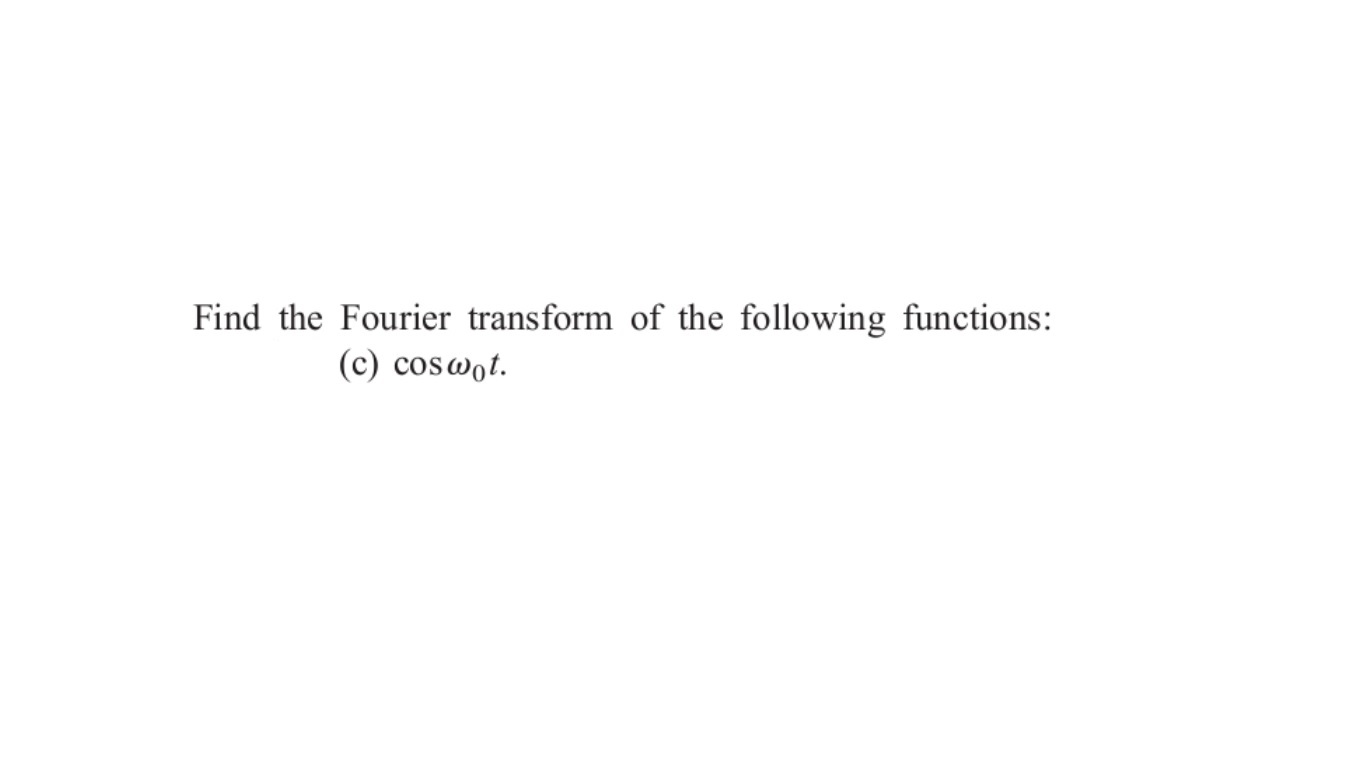How about solution?

1 Answer
Aug 13, 2018
Explanation:
Let
so:
and if we translate the distribution:
So the Fourier transform of
By the symmetry property of the transform if we let:
But using the expression of the cosine as:
and the linearity of the transform then:

